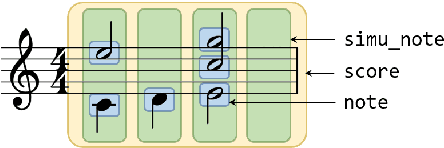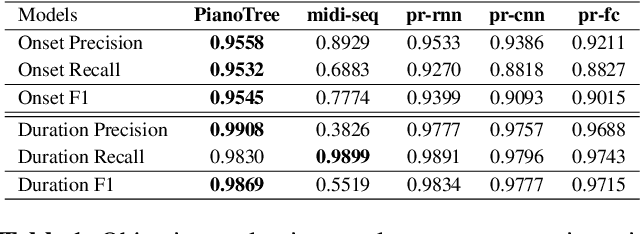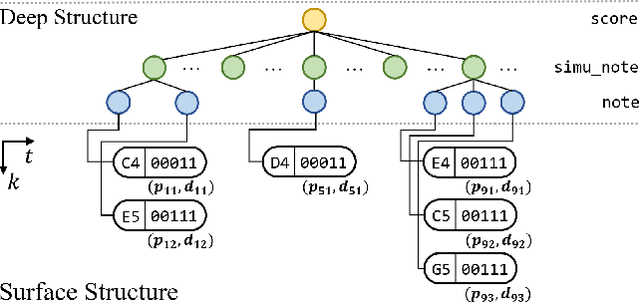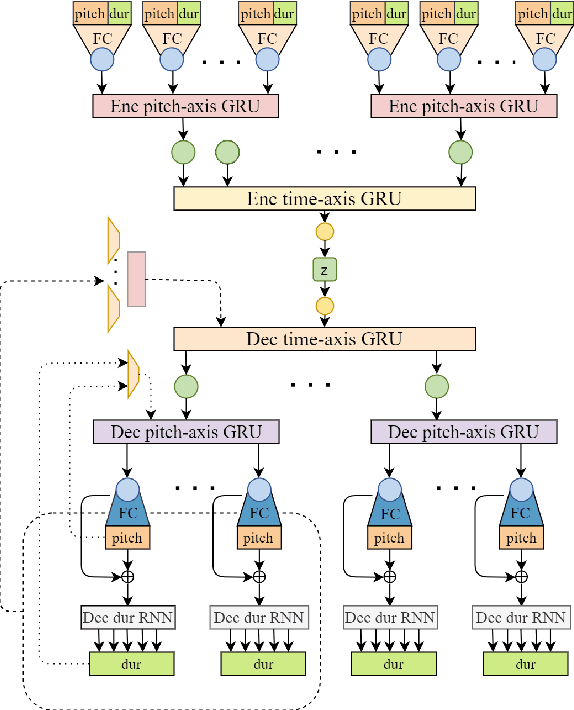PIANOTREE VAE: Structured Representation Learning for Polyphonic Music
Paper and Code
Aug 17, 2020



The dominant approach for music representation learning involves the deep unsupervised model family variational autoencoder (VAE). However, most, if not all, viable attempts on this problem have largely been limited to monophonic music. Normally composed of richer modality and more complex musical structures, the polyphonic counterpart has yet to be addressed in the context of music representation learning. In this work, we propose the PianoTree VAE, a novel tree-structure extension upon VAE aiming to fit the polyphonic music learning. The experiments prove the validity of the PianoTree VAE via (i)-semantically meaningful latent code for polyphonic segments; (ii)-more satisfiable reconstruction aside of decent geometry learned in the latent space; (iii)-this model's benefits to the variety of the downstream music generation.
 Add to Chrome
Add to Chrome Add to Firefox
Add to Firefox Add to Edge
Add to Edge